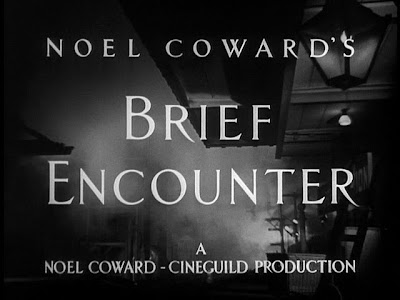Out with the New, in with the Old - Part I
A comparison of The Day the Earth Stood Still (Robert Wise, 1951) and…ehh…well – The Day the Earth Stood Still but this one was by Scott Derrickson in 2008
Let’s just get this out of the way at the outset, if you read my first post then you’ll know that I have a certain affection for the 1951 original and so may be prone to more than a touch of bias. Couple that with the fact that the contemporary version decided that Keanu Reeves would make a sensible choice for the lead role of Klaatu and we should all be packing up now and going home. But since we are probably all already home, please believe me when I say that I shall endeavour to be objective and choke the festering bile back as it rises and taking pleasure in the fact that at least it wasn’t Tom Cruise.
The plot of both films is similar, at least in their general premise. A federation of planets have sent an envoy to earth to carry out a mission prompted by our evolved status, nature and immaturity. In the original we cannot be trusted with the nuclear technology we are developing, which is now seen as a problem for the rest of the universe, as we potentially threaten them as well as ourselves. The updated version instead focuses on our encroachment and destruction of nature and the environment. This already points to an intrinsic shift in the ideology of the two films.
Helen Benson:“You said you’d come to save us.”
Klaatu: “I said I came to save the earth.” (2008)
Klaatu: “There must be security for all — or no one is secure... This does not mean giving up any freedom except the freedom to act irresponsibly. …. Your choice is simple: join us and live in peace, or pursue your present course and face obliteration. We shall be waiting for your answer. The decision rests with you.” (1951)
The fate of the earth rest with us, with our willingness to change, we now know what is at stake and it is up to us. In the new version however the decision has already been made. We had no knowledge and were giving no warning, despite the fact that “one of them” has lived among us for 70 years. They are a higher power and they will exact that upon because we have been judged. Now, I’m not taking that – certainly not from Keanu Reeves!
So on it earlier, this is where Kathy Bates has dropped the ball because what actually follows is GORT, in the original film a tall police-bot who only responds to aggression – granted it is with aggression but he’s not one for starting trouble. In the remake, the enormous GORT represents a biblical plague, literally, as he far from subtly transforms into an immense cloud of nanites that pay more than a passing resemblance to locusts. These mini locusts then proceed to lay waste to the human dominion while Keanu Reeves stares straight ahead trying to work out if humanity is rubbish or not, or remember his lines I’m not quite sure. Good ol’ fashioned wrath of God type stuff dressed up as the contemporary concern of environmentalism.
The fact that we have always had “a good side” to us, as the original visitor to earth has observed over the past 70 years, is ignored for the entirety of the film, until the full spectacle of our ‘punishment’ is demonstrated. I suppose the Old Testament is better suited to these types of overblown action set pieces, as opposed to New Testament set ups – Man goes for walk, talks sense and then serves lunch – doesn’t really have the same visual scope for all out CGI razzamatazz. The peaceful demonstration of power in the original, the cutting of all power on earth barring any that would harm life, the act which gives the films their title, is a footnote in the remake, the by product of the destructive judgement being visited on the human race.
The screenwriter of the original in 1951, Edmund H North, fully intended for there to be parallels between the character of Klaatu and Jesus Christ, “It was my private little joke. I never discussed this angle with [producer Julian] Blaustein or [director Robert] Wise because I didn't want it expressed. I had originally hoped that the Christ comparison would be subliminal.” (von Gunden and Stock, 1982:44). So in the original we see Klaatu bring a message of peace, adopt the name Carpenter (as Christ adopted this as an earthly family trade), perform a miracle, place stock in the thoughts of children as a relevant worldview, stay the potential for violent apocalyptic judgement by his word (Klaatu Barada Nikto), and finally die, resurrect and ascend. All without causing injury to any other living being.
The Klaatu of the remake does not bring a message of peace, humanity has been judged and it is scheduled for termination and there is nothing he can (or at least will) do about it. There are perhaps arguably elements of the new Klaatu as Christ. He is ‘born’ human, performs miracles, raising the dead and at one point adopts a crucifixion pose, replete with stigmatic like red marks on his palms supplied by the laser sights of gunships. While these moments of Christ-like symbolism do appear and there are arguably more, I don’t believe that the Christ comparison stands as strongly in the remake, in that the dead policeman who is resurrected was initial made dead by Klaatu and the ‘crucifixion’ is hardly a symbol of humanitarian sacrifice as a simple sweep of his hands turns their weapons against them destroying the helicopters (and so presumably the crews). He has no qualms about harming humans, presumably because we are already slated for extinction, his escape from his military captors results in the injury of many in comparison to Rennie’s Klaatu who simply disappears. But this is the heart of my argument, both draw parallels with the bible but the remake, whose references could never have hoped to be subliminal, seems more entrenched in the fire and brimstone of the Old Testament rather than ‘do unto others’ attitude of the New Testament.
The ships that bring Klaatu and GORT to earth embody this lack of subtlety. The 1951 version is a spaceship – that’s it, but really what else do you need? The fancy-dan new version is also a spaceship (obviously) but it is also an ark, Kathy Bates says it so it must be true. There are a few of them dotted around the planet scooping up the different species of the earth and the plan is to bring them back, once humans have been taken care of, so they can propagate their little brains out without us building and licking stamps and driving and…y’know, human stuff.
Apparently Uneducated, State the Obvious, Exposition Providing Government Guy: “What comes after the arks?”
Regina Jackson, Secretary of State: “The flood.”
| GORT in 1951 |
So on it earlier, this is where Kathy Bates has dropped the ball because what actually follows is GORT, in the original film a tall police-bot who only responds to aggression – granted it is with aggression but he’s not one for starting trouble. In the remake, the enormous GORT represents a biblical plague, literally, as he far from subtly transforms into an immense cloud of nanites that pay more than a passing resemblance to locusts. These mini locusts then proceed to lay waste to the human dominion while Keanu Reeves stares straight ahead trying to work out if humanity is rubbish or not, or remember his lines I’m not quite sure. Good ol’ fashioned wrath of God type stuff dressed up as the contemporary concern of environmentalism.
 |
| GORT 2008 |
The fact that we have always had “a good side” to us, as the original visitor to earth has observed over the past 70 years, is ignored for the entirety of the film, until the full spectacle of our ‘punishment’ is demonstrated. I suppose the Old Testament is better suited to these types of overblown action set pieces, as opposed to New Testament set ups – Man goes for walk, talks sense and then serves lunch – doesn’t really have the same visual scope for all out CGI razzamatazz. The peaceful demonstration of power in the original, the cutting of all power on earth barring any that would harm life, the act which gives the films their title, is a footnote in the remake, the by product of the destructive judgement being visited on the human race.
So what!? Get to the point! Leave Keanu Reeves alone! Get a life! I hear you cry. Fair enough, what I want to know is this…why after 57 years is the same material approached so differently? In the intervening 57 years did we become peaceful? Have we learned how to get along and become more accepting? Is the environment now the only global concern because all humans have learned to exist in perfect harmony? No, I don’t believe that to be the case at all and I feel stupid for even mentioning it. More to the point I think there is a potentially argument for an alignment of the politics of both periods through waves of right wing, conservative Christianity shown by political leaders of the times; Christianity that looks more to an Old Testament style of leadership. But I’ll get to that in the next post.
Peace, out. J



Comments
Post a Comment